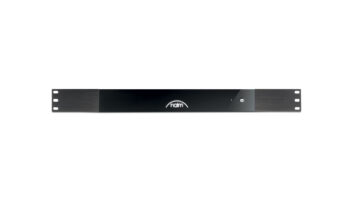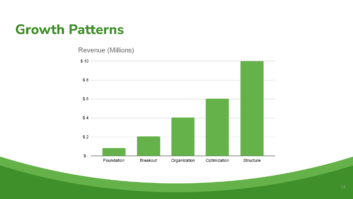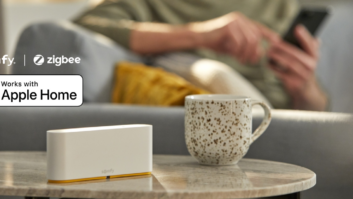As was the case at Google’s “I/O” conference a few weeks ago, Apple’s annual WorldWide Developer’s Conference (WWDC) is really not a consumer event, although some new products are announced or at least previewed there. The main purpose is to present new OS versions and features, so that apps and other hardware are in place when the new items are announced throughout the rest of the year.
Monday’s WWDC keynote presentation’s software and hardware announcements were, for the most part, in line with rumors and expectations. For those of us in the residential and consumer world, however, there was more than meets the eye…or ears.

Apple Homepod
Our TWICE colleagues have already covered the product details, but today the question is more about what this means than what it is. And, as is also often the case, sometimes what was not shown was as important as what was.
In his address, Apple’s Tim Cook said the focus would be on six areas. The first was TVOS, the operating system that powers Apple TV. Rumored and now confirmed, Apple TV will add Amazon’s content through an app to be available later this year. This at least partially begins to put the now-aging Apple TV more on par with Roku and, of course, Amazon Fire TV. However, there are some caveats.

Apple HomepodFirst, although Prime Video content will be available on Apple TV, Apple-captive content will still not be available as an app on other streaming devices. Thus, for those customers who select content from more than one streaming provider, it is still probable that you will need to provision more than one product. Put another way, “All devices have some content, but none have all.” This is particularly true as cable operators such as Comcast/Xfinity and Charter/Spectrum are still available only as Roku or phone apps; not on other platforms. There are ways to get around that limitation to some extent, but that’s really not the easiest way to go.
Even more important in the era of UHD, Apple still has not announced a “Gen.5” version Apple TV with 4K and HDR capability. Thus, even though Apple TV will soon deliver Amazon content, it can’t show it the way that other devices can. Perhaps we’ll see an Apple TV hardware update when the next TVOS update comes out, possibly in September.
The second of Tim Cook’s focus areas was a new Watch OS. The new features and advancements were mostly in the ”Watch,” “Fitness,” and “Activity” areas. Expanded Siri functionality and ties to HomeKit may make it worth working with clients and customers to see how that could benefit their home ecosystems.

Siri in action on the HomePodWhile the third focus area—Mac OS and the new MacBook and iMac products—is interesting and very useful for business applications, they are not as critical to home applications.
The fourth focus area—iOS—does have importance here, as it is at the core of what both iPhone and iPad products can do. (Note that while the fifth focus area—iPad—did include some new models, there were no new iPhone models announced. Those, presumably, will also be introduced at the traditional early-fall event.)
iOS 11, available later this year, will add some key advancements that will be of particular interest to those who use it for control and automation. They include a new visual interface for Siri queries, the option of a male voice, and more. In parallel, iOS will add Machine Language that in some ways is similar to the “Deep Learning” announced for the next Android OS. Face tracking and natural language recognition add to the range of capabilities that one will expect to see in the IoT world in conjunction with Siri as the voice interface.
iOS will add High Efficiency Video Coding (HEVC) capability for better pictures, and there will be an “AR Kit” for developers to use the new features of iOS 11 to create AR-based applications. Will we eventually see an iOS-based VR/AR headset or something along the lines of an iOS-centric version of Oculus or the phone-support for Android Daydream? Only time will tell, but a look at the impressive demos at the keynote event show that VR/AR is now definitely showing on Apple’s radar.

Apple Speaker added to HomeKitAll of this takes us to the focus area that was most expected. The lead in came during the iOS portion of the event with the announcement that “speakers” will be a part of HomeKit though iOS 11 and AirPlay 2. This will build multiroom audio through iOS so that content may be sent to any room with forthcoming AirPlay2-compatible AirPlay speakers or Apple TVs.
That led to the big announcement of the sixth and final focus area for this year’s WWDC. Claiming that he wants to “reinvent home music,” Cook unveiled the Home Pod speaker.
Phil Schiller, senior VP of Worldwide Marketing for Apple, offered a Sonos product to show speakers that were, in Schiller’s words, “Speakers but not smart” and an Amazon Echo to show something that was “Smart, but not a speaker.” HomePod, on the other hand, is intended to be both. Framing the concept product as “Being able to rock the house, be spatially aware and become a musicologist, and control your home,” HomePod certainly seems to be capable of making good on those promises.
It is 7 inches tall and will be available in white or “space gray,” and is covered in a mesh that gives the same appearance as the bottom part of a Google Home. Powered by Apple’s A8 processor, using seven beam-forming tweeters paired with an upward firing woofer, room-sensing technology will learn where the unit is placed in relation to the room situation, and deliver an immersive music experience.
A six-microphone array will not only be used to voice control, but also to provide echo cancellation for commands even when loud content is playing. This will also optimize the audio when two HomePods are used for true stereo.
On the surface, all of this and the many other features and capabilities of HomePod, such as the content selection options and improved security, will definitely make it something that will be a hit with Apple fans and others to whom the performance, style, and security of an Apple ecosystem product are key. The question, however, is to see how it will fair against the competition from Amazon and Google. After all, HomePod will sell for $349 when it goes on sale in December. Even ignoring any new models from the competition that will appear before then, it is anywhere from $170 more than an Amazon Echo to $200 more than an Echo Dot. It is even $120 more than the forthcoming Amazon Echo Show, with its camera and 7-inch touchscreen display. It is $220 more than a Google home and $219 more than Chromecast Audio.
Will the public see the value of HomePod? For those who simply want good music, connecting a Google Chromecast or the audio output of an Echo Dot will deliver the music using existing quality components. For more home theater-centric audio, while the technology of HomePod will balance out the soundfield in a two-unit configuration, will it deliver the localization and dialog intelligibility of a connected soundbar, or one to which a Dot is connected for voice control?
The HomePod’s feature list is certainly impressive, but will it be able to match the head start of Amazon for control “skills,” particularly within the custom community? Will consumers want the Echo-to-Echo calling feature from Amazon or the “call any phone” feature to come for Google Home? As Microsoft gets into the space with a speaker powered by Cortana first under the Harman Kardon brand, how will the combination of Microsoft’s technology and the proven audio expertise of Harman impact this market segment?
It’s hard to tell which brand or product will take the lead in the long term. That said, regardless of the success of Apple’s new entrants, their appearance will most certainly create a rising tide that will lift all boats. Indeed, it is fair to say that there doesn’t have to be a single winner. Carrying, provisioning and providing ongoing support and ancillary products and services such as home networks means that in this case, everyone can win. It’s up to us and it will be interesting to see how things play out through the rest of the year.







